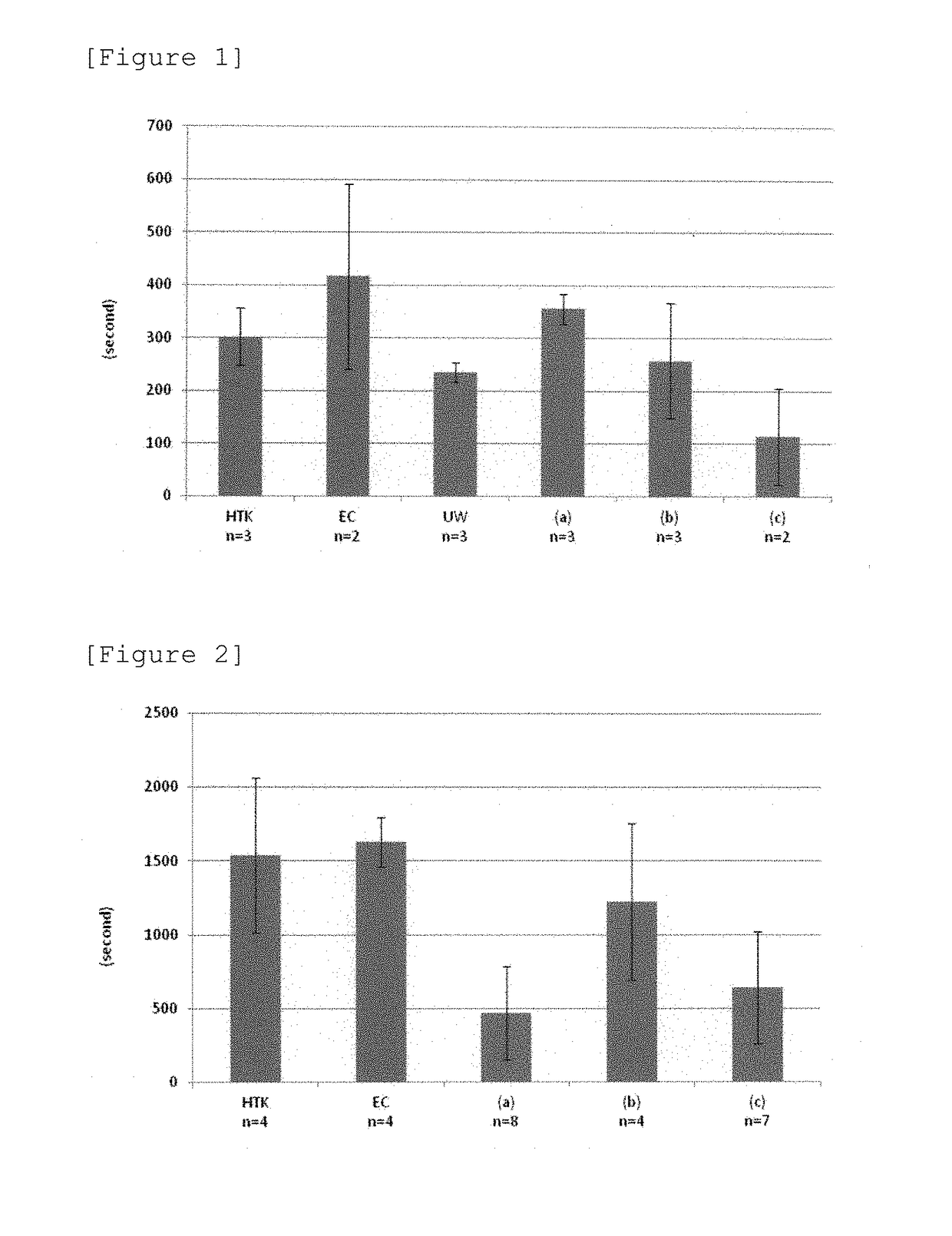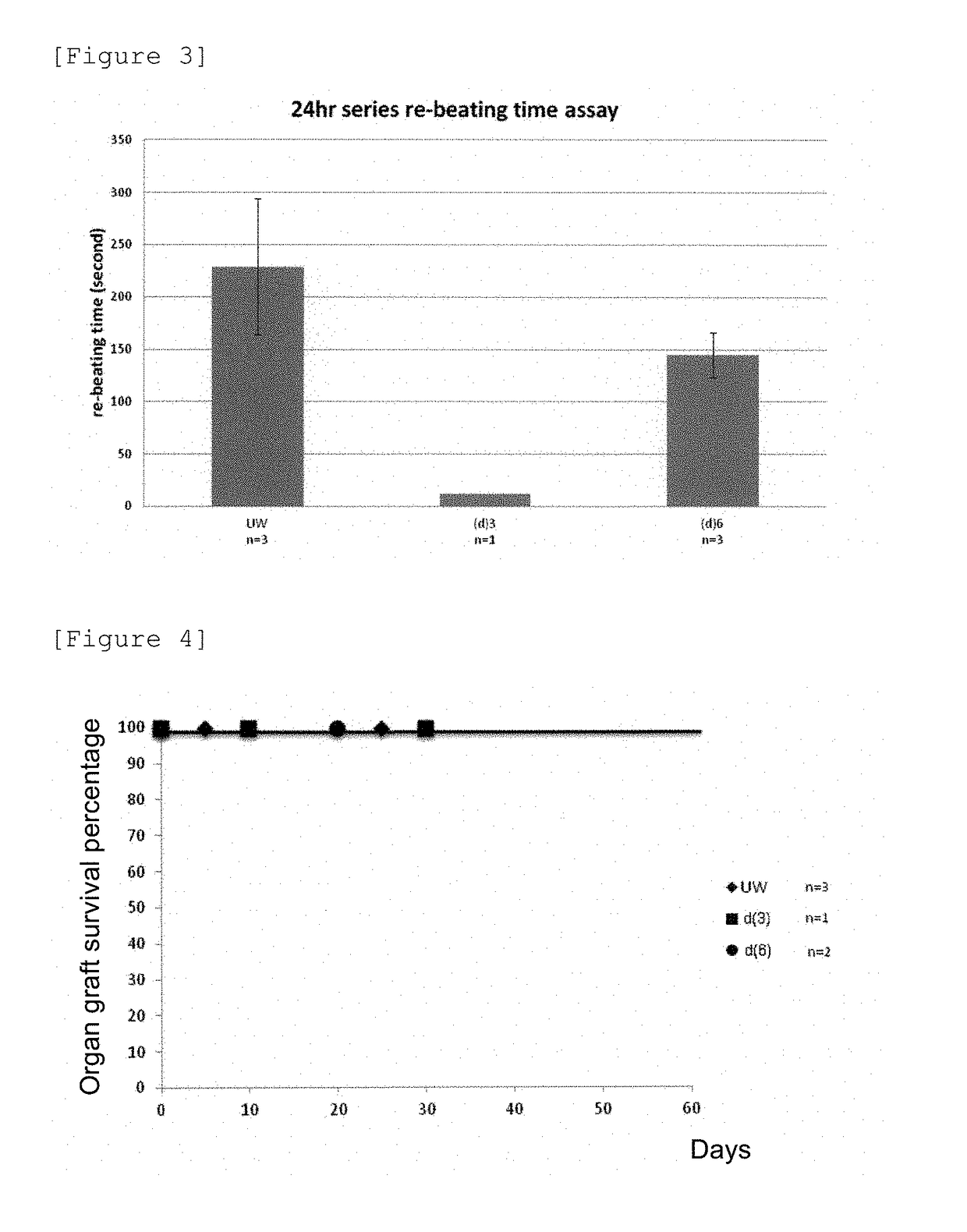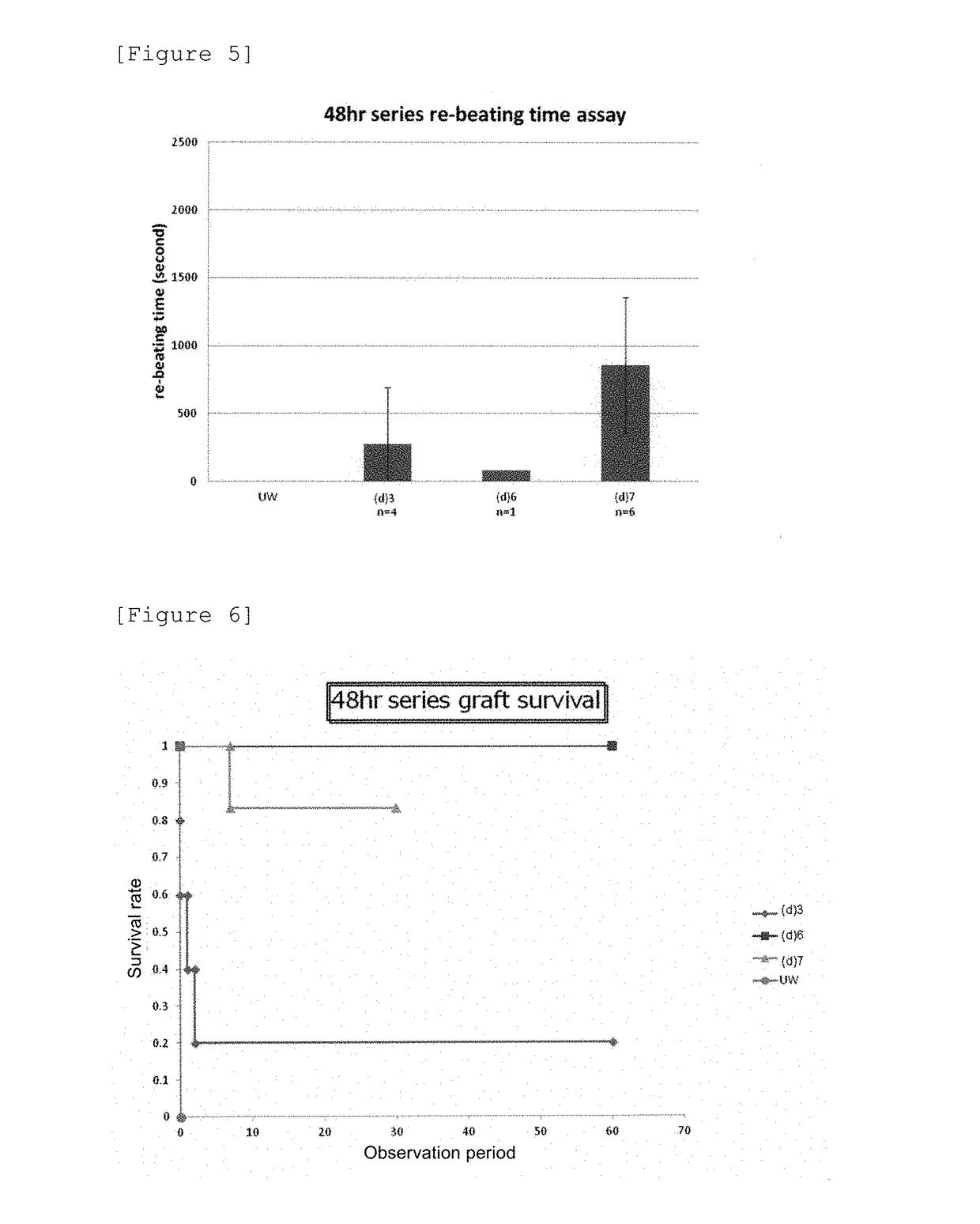Organ preservation solution
- Summary
- Abstract
- Description
- Claims
- Application Information
AI Technical Summary
Benefits of technology
Problems solved by technology
Method used
Image
Examples
example 1
(Preparation of Preservation Solution)
[0063]Three types of newly prepared organ preservation solutions (preservation solution (a) to preservation solution (c)) were used as examination subjects. The details of components added to and dissolved in distilled water are shown in the following Table 1. When an organ to be transplanted is immersed in each of these preservation solutions over the latest allowable time for ischemia that has been determined with regard to conventional preservation solution products, whether or not the functions of the organ could be maintained after completion of the transplantation was studied. Specifically, when the heart of a donor mouse that had been immersed in each of the above described three types of preservation solutions was transplanted into an isogenic mouse, the time required until the starting of the re-beating of the heart after the transplantation was used as an indicator. As well-known currently available products, three types of preservatio...
example 2
(Mouse Ectopic Heart Transplantation 2)
[0069]Ectopic heart transplantation was carried out on mice in accordance with the procedures described in the above Example 1 (Mouse ectopic heart transplantation 1), with the exceptions that the time required for immersion of the heart in each preservation solution was set at 48 hours, and that the currently available products, HTK solution and EC solution, were used for comparative investigation. With regard to each of individual mice, which had been subjected to the ectopic heart transplantation, the time required until the re-beating of the transplanted heart started was measured. The results are shown in FIG. 2.
(Result 2)
[0070]As is clear from FIG. 2, the time required for the starting of the re-beating of the heart was 1,500 seconds or more in both cases of using the HTK solution and the EC solution. On the other hand, the time required for the starting of the re-beating of the heart in the case of using the preservation solution (a) was...
example 3
(Mouse Ectopic Heart Transplantation 3)
[0071]Preservation solutions (d) were prepared by adding iron(II) sulfate to the above described preservation solution (c), and were used as an iron-added series of preservation solutions. Further studies were continued. The details of components of each preservation solution are shown in the following Table 3.
TABLE 3PreservationPreservationPreservationsolution (d) solution (d) solution (d) Component367Potassium chloride (KCl)15 mM15 mM15 mMDisodium hydrogen phosphate42.5 mM 42.5 mM 42.5 mM dodecahydrateSodium dihydrogen phosphate15 mM15 mM15 mMdihydrateL-Ascorbic acid0.25 mM 0.25 mM 0.25 mM L-Ascorbic acid phosphate 0.45 mM 0.45 mM 0.45 mM ester magnesium salt n-hydrateL-Cysteine hydrochloride0.63 mM 0.63 mM 0.63 mM monohydrateGlycine (Glycine)10 mM10 mM10 mMFeSO40.5 μM 5 mM2.75 mM D(+)-Glucose326-363326-363326-363(added to achieve mOsm / kgmOsm / kgmOsm / kgosmotic pressureas shown in right columns)
[0072]Ectopic heart transplantation w...
PUM
 Login to View More
Login to View More Abstract
Description
Claims
Application Information
 Login to View More
Login to View More - R&D
- Intellectual Property
- Life Sciences
- Materials
- Tech Scout
- Unparalleled Data Quality
- Higher Quality Content
- 60% Fewer Hallucinations
Browse by: Latest US Patents, China's latest patents, Technical Efficacy Thesaurus, Application Domain, Technology Topic, Popular Technical Reports.
© 2025 PatSnap. All rights reserved.Legal|Privacy policy|Modern Slavery Act Transparency Statement|Sitemap|About US| Contact US: help@patsnap.com



